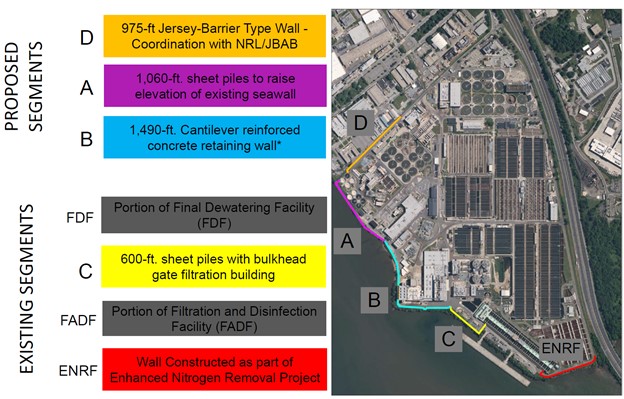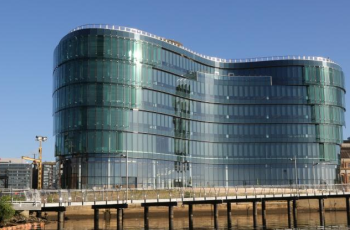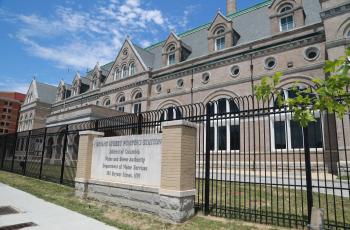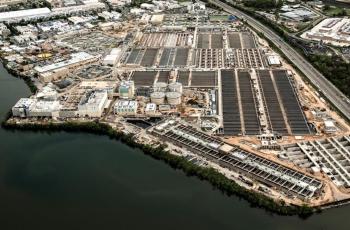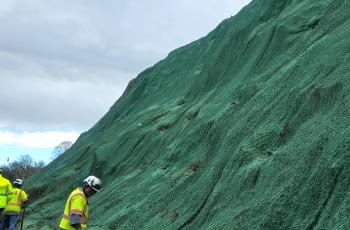Blue Plains Floodwall
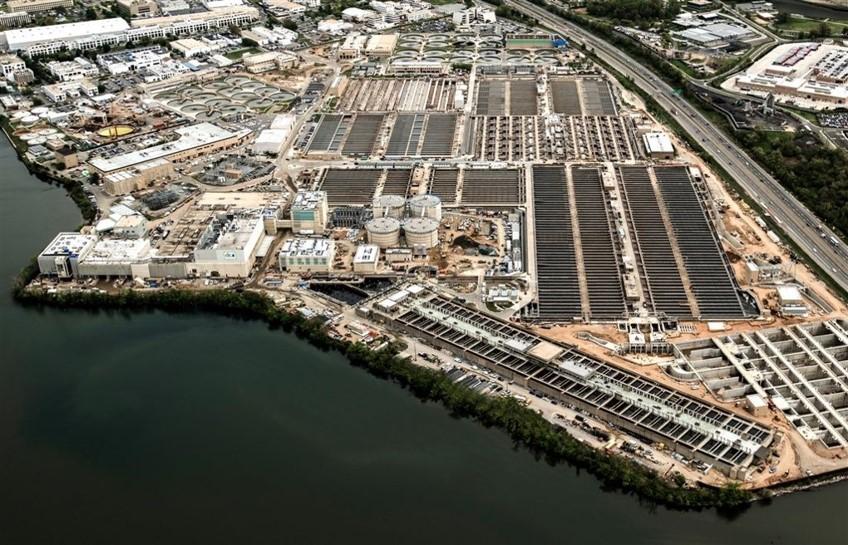
Overview
DC Water is constructing a floodwall to protect the Blue Plains Advanced Treatment Plant from being inundated in a 500-year flood event. About half of the floodwall has been completed. Now DC Water is applying for a FEMA BRIC (Building Resilient Infrastructure and Communities) grant to help construct the remaining three segments.
The grant is anticipated to cover 70 percent of the cost of the design-build contract for segments A, B and D. The Authority previously received $2.4M from FEMA for Segment C of the floodwall, which was completed in June 2021.
We are currently soliciting public comment on the grant proposal. Please let us know what you think by emailing us at communications@dcwater.com.
Background
Flood Insurance Rate Maps were updated in 2010, which prompted DC Water to assess the risk to Blue Plains from flood. DC Water risk assessment resulted in a recommendation to mitigate Blue Plains AWTP from the impacts of a 500-year flood event.
The first segment of the wall was constructed as part of the construction of the Enhanced Nitrogen Removal Project. Construction of the second segment of the wall, identified as Segment C, was completed in July 2021 and DC Water obtained $2.4M from FEMA toward installation of that wall. Three segments (Segments A, B and D) remain to be constructed.
A hydraulic analysis was performed that involved evaluating the impact of the all segments of the wall on the existing 100-year flood elevations for the Potomac River. The results of the analysis confirmed that the completed floodwall system at Blue Plains will not impact the Potomac River elevations during a 100-year storm.
What
- Top elevation of the wall = 17.2 Feet, DC Datum
- This is 2.9 feet above the 500-year flood (1985 Flood Insurance System)
- 500-year flood elevation at high tide, freeboard accounts for wave action
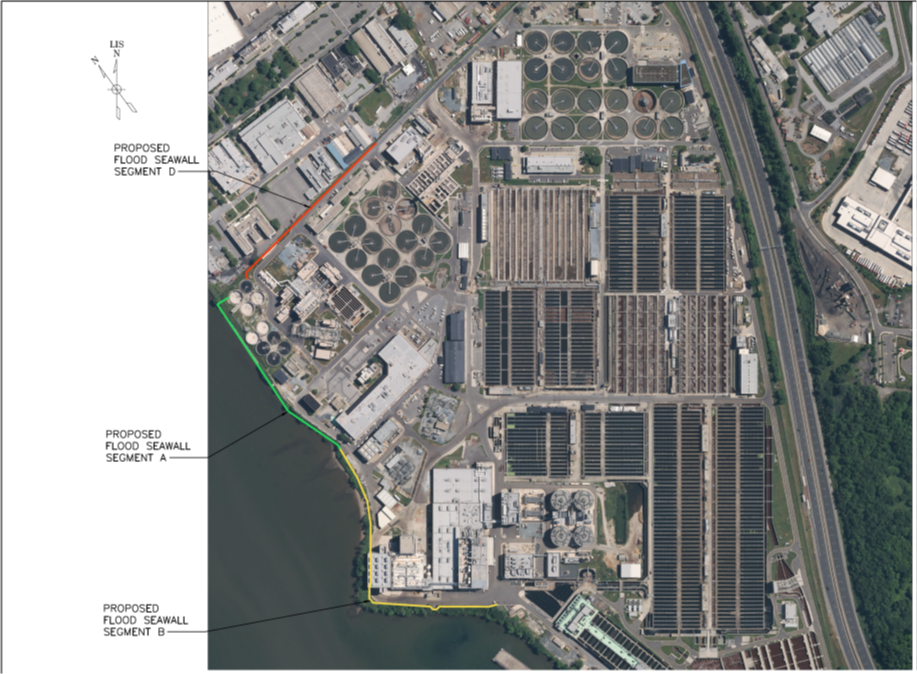
Why
The Advanced Wastewater Treatment Plant at Blue Plains (AWTP) is one of the largest advanced wastewater treatment plants in the world, serving residents, businesses, government, and visitors to Washington, DC as well as counties in Maryland and Virginia. The AWTP is a critical facility that operates 24 hours per day, 7 days per week, 365 days per year.
A flood event with a frequency of occurrence of 0.2% (aka 500-year event) would flood galleries in the plant resulting in ceasing operation of treatment process equipment. The time it would take to place the systems back in operation after the storm could be weeks or months. The impact of this disruption to plant operations would be significant detriment to public health and the environment.
How
The planning related to Blue Plains Floodwall Segments A, B and D is partially funded by a grant from the Federal Emergency Management Administration (FEMA) and the District of Columbia Homeland Security and Emergency Management Agency under FEMA’s Flood Mitigation Assistance (FMA) Program (Federal Identification Number: FMA-PL-03-DC-2019-001).
